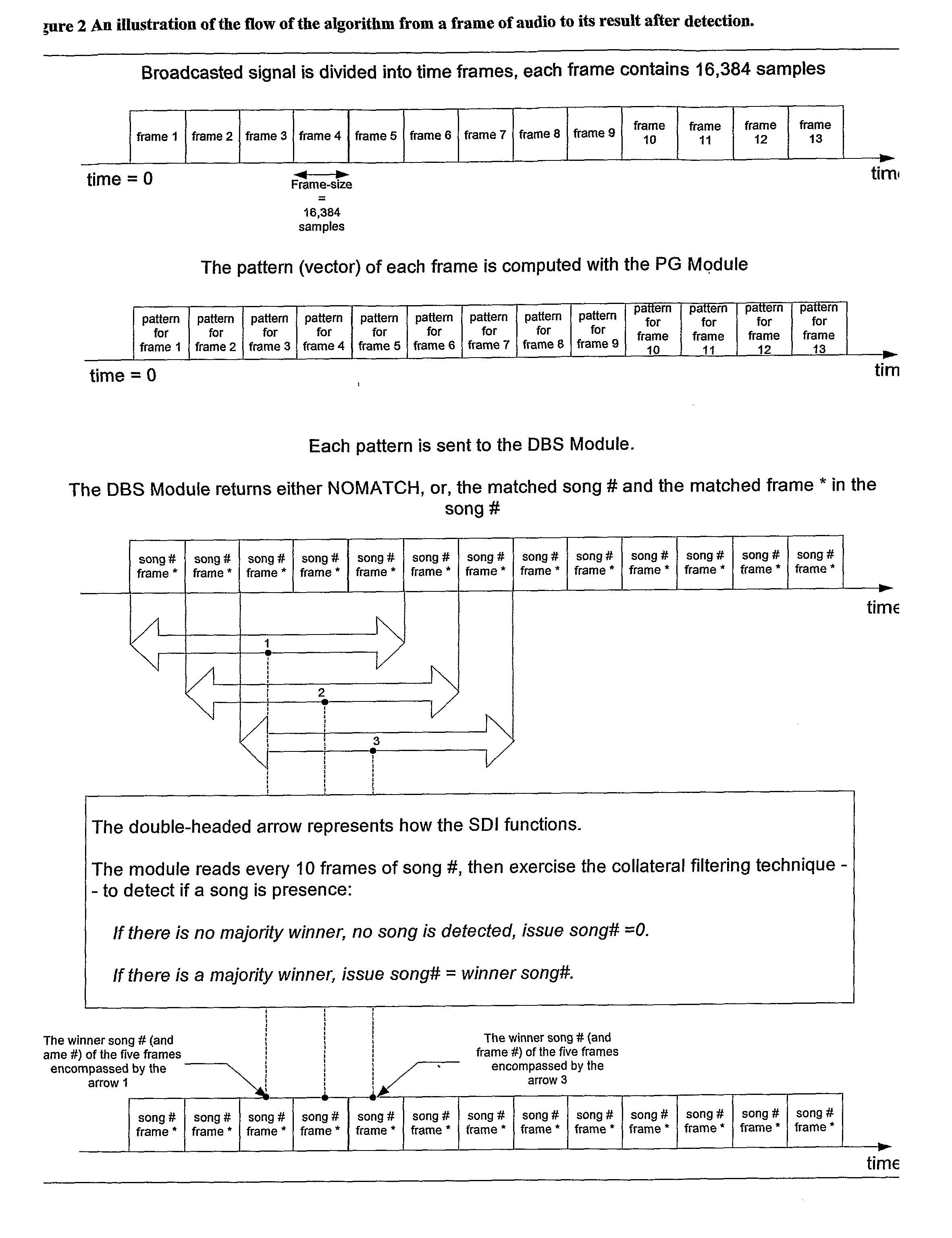Method and apparatus for automatic detection and identification of broadcast audio and video signals
- Summary
- Abstract
- Description
- Claims
- Application Information
AI Technical Summary
Benefits of technology
Problems solved by technology
Method used
Image
Examples
Embodiment Construction
Background
[0011] The present invention relates to the automatic recognition of widely disseminated programming, such as radio, television or digitally delivered content over the Internet.
[0012] Owners of copyrights in broadcast programming, including advertisers, need to measure when and where their programming has been broadcast in order to correctly compute performance royalties, confirm compliance with territorial restrictions or verify that certain advertising has been aired as scheduled. The traditional method for monitoring the radio or television has involved using humans to listen or watch and then record that which they hear or see, or alternatively, rely on the broadcast records of radio and television stations. This is a labor intensive process that has limited efficiency or accuracy. It is an object of the invention to use advanced computing systems to fully automate this process. In this manner, audio or video content is registered into the system, and then, in the ca...
PUM
 Login to View More
Login to View More Abstract
Description
Claims
Application Information
 Login to View More
Login to View More - R&D
- Intellectual Property
- Life Sciences
- Materials
- Tech Scout
- Unparalleled Data Quality
- Higher Quality Content
- 60% Fewer Hallucinations
Browse by: Latest US Patents, China's latest patents, Technical Efficacy Thesaurus, Application Domain, Technology Topic, Popular Technical Reports.
© 2025 PatSnap. All rights reserved.Legal|Privacy policy|Modern Slavery Act Transparency Statement|Sitemap|About US| Contact US: help@patsnap.com



